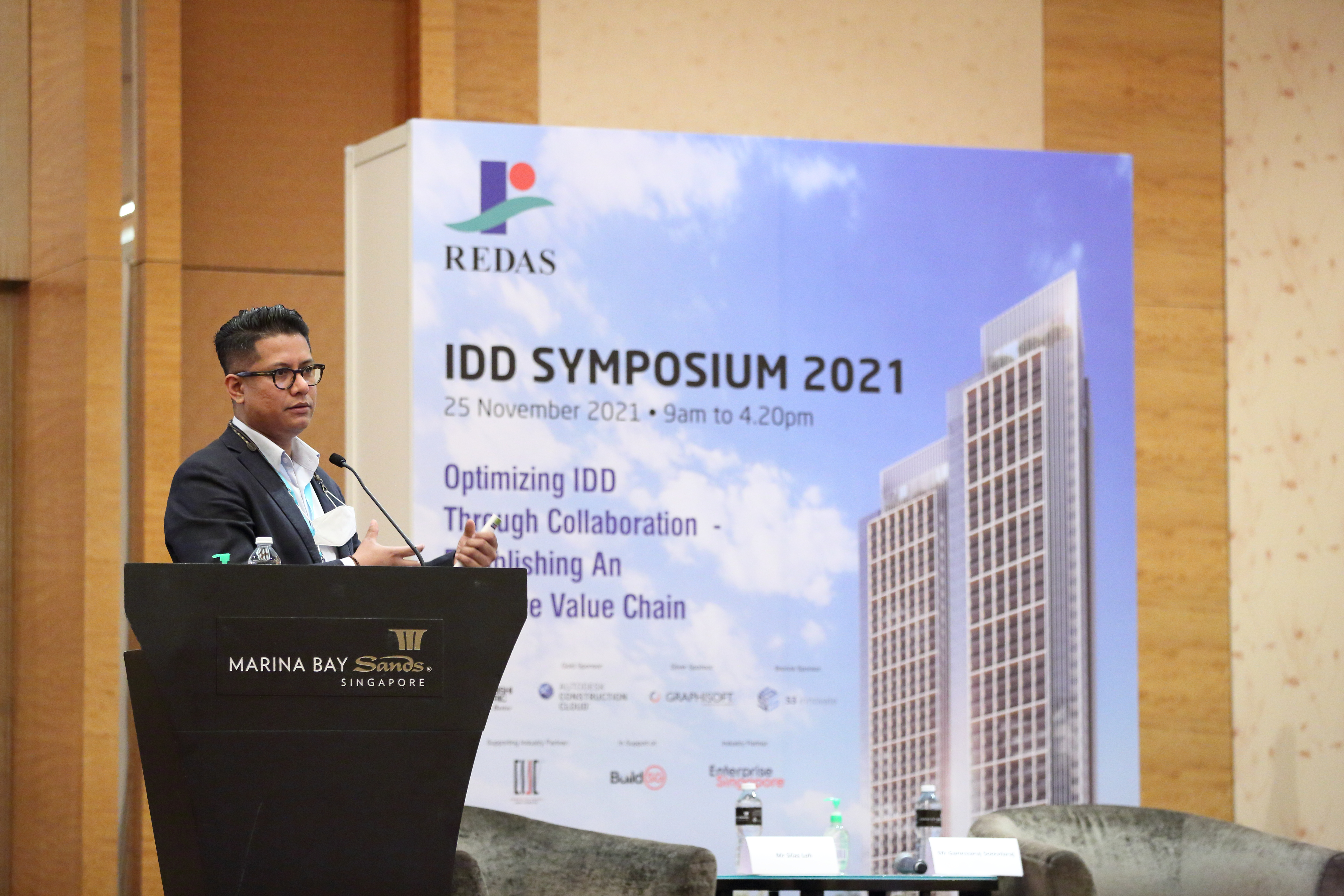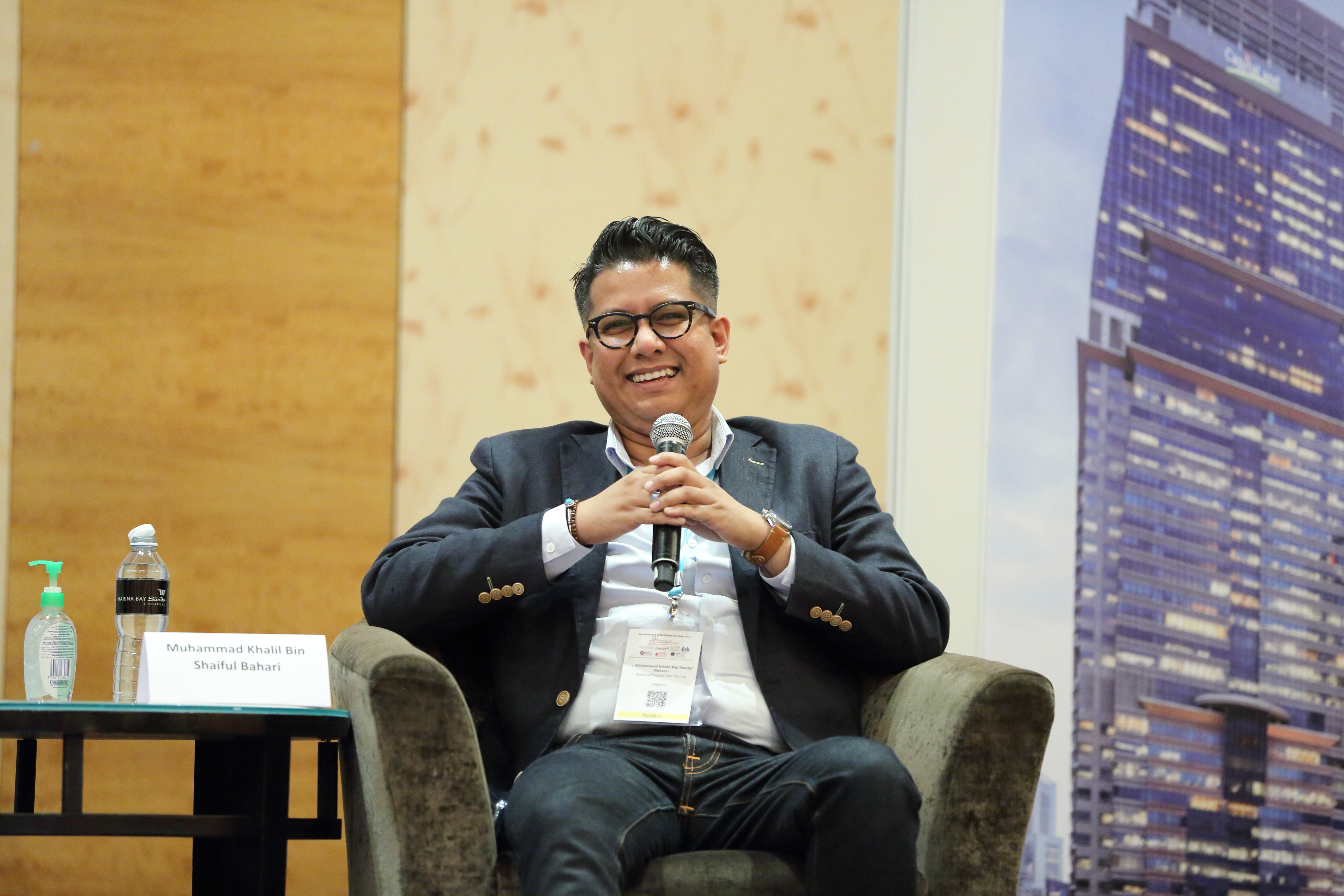It was the height of the COVID-19 pandemic in October 2020, and the number of people allowed on construction sites was restricted. But a member of Boustead Projects’ operations team was seen using a camera mounted on a hard hat around the site.
He was capturing 360-degree images of the whole area, which were later uploaded onto a shared digital platform for safe and efficient access by various parties. “With these images, stakeholders are able to have an overview of the physical site from the luxury of their room or office, without the need to be on site,” explained Mr Muhammad Khalil, Senior Digital Delivery Manager at real estate solutions provider Boustead Projects.
He oversees digital transformation efforts at Boustead Projects, which offers these new technology solutions to the Built Environment (BE) sector.
Mr Khalil, who started his career in 2005 as a draftsman in an architectural consultancy, observed that the sector has transformed significantly over the last 15 years.
From having to manually draw designs and recreate thousands of documents, he now deals with game-changing digital processes such as Building Information Modelling (BIM) and more recently, Integrated Digital Delivery (IDD).
|
Work processes: Then and Now
Prior to implementing digital solutions such as BIM and IDD, the conventional method of conducting inspections entailed going down to the construction site, capturing the images, uploading the files onto a laptop, creating a set of manual reports and sharing it with different stakeholders.
Today, these five steps have been reduced to three. Using a shared digital platform, project managers can use their mobile phones, tablets or iPads to capture inspection issues and directly upload them via digital forms, to be accessed by various stakeholders.
|
These processes mean BE professionals can minimise onsite project inspections and visualisations, improving overall productivity and efficiency.
“What we aim to do is to digitalise some of these cumbersome administrative processes,” he said. “I see myself as a catalyst and an agent of change…always focusing on new ways of doing things.”
|
|
 Mr Khalil speaking at the IDD Symposium 2021 Mr Khalil speaking at the IDD Symposium 2021
|
|
LEADING DIGITAL INNOVATION
Boustead Projects embarked on its digitalisation journey in 2015 to keep pace with real estate clients’ expectations for contractors and builders to incorporate tech-savvy solutions as part of their services. Boustead Projects has a wide range of clients, from statutory board JTC to tech company Razer.
Client expectations are changing. They are looking at builders and contractors who are much savvier and are able to provide them value for money with the use of technology.
- Mr Muhammad Khalil, Boustead Projects
Mr Khalil, who joined Boustead Projects in 2016, was instrumental in driving the use of BIM in the company, allowing various BE stakeholders – architects, engineers, real estate developers and contractors – to plan, design and construct a 3D model together on a shared platform.
Next came IDD in 2017. It offered an upgrade to BIM by integrating work processes across the entire building life cycle, from design all the way to construction and maintenance. Digital technologies such as artificial intelligence and data analytics are used.
Data collected from design and site operations with machine learning and artificial intelligence help to identify any technical and design non-compliance, while data analytics tools are able to measure performance and report on project health.
What followed was Virtual Reality (VR) technology later that year. Offering clients immersive views of how buildings will look upon completion, it reduces confusion and delay that can result from traditional drawings.
“It gives clients an assurance on how we are going to build the building and a better understanding of how it is going to look like when it's ready,” said Mr Khalil.
These approaches have significantly shortened the inspection time of construction projects and made data visualisation of construction sites more convenient.
“We have seen at least a 30 per cent reduction of time or man-hours to carry out inspection processes with the use of digital solutions,” he noted.
Despite the benefits, he shared that the biggest obstacle was getting internal buy-in to adopt the digital processes initially, as there is always inertia to change. To overcome this, Mr Khalil and his team identified challenges at the individual and organisational level before implementing the digital solutions into the work processes.
But many have now witnessed the power of these digital solutions, enabling work to continue during the pandemic when site visits came to a near halt.
There are also intangible benefits. “People feel much happier and are more satisfied. They have more time on their hands to do other more productive work,” he shared.
|
|
 Mr Khalil engaging the crowd at the IDD Symposium 2021 Mr Khalil engaging the crowd at the IDD Symposium 2021
|
|
FILLING THE SKILLS GAP
Mr Khalil’s work at Boustead Projects goes beyond the company to encompass the entire BE sector, with its partnership with SkillsFuture Singapore (SSG) under the SkillsFuture Queen Bee programme, which is supported by the Building and Construction Authority (BCA).
Since assuming the SkillsFuture Queen Bee role, Boustead Projects has reached out to 14 small and medium-sized enterprises (SMEs) to discuss their skills needs and help them map out their training plans.
These SMEs are typically piping and wall erection contractors and construction material suppliers, whose work is traditionally more manual and labor-intensive.
As a Skills Manager under the programme, Mr Khalil’s tasks include identifying the skills gap within SMEs as well as curating programmes and facilitating training with the assistance of institutes of higher learning.
From among the SMEs that he has worked with, he pinpoints gaps in software skills such as the use of design authoring software. There is also a need to change mindsets to embrace digital transformation. Under the SkillsFuture Queen Bee programme, Mr Khalil curates courses such as those on design thinking and cultivating a experimental mindset to motivate people to be creative in finding new solutions.
The courses under the programme are administered by trainers from NTUC LearningHub, BCA Academy, Singapore Polytechnic, Singapore Management University and Singapore University of Social Sciences.
“Rather than focusing on hard skills, I would rather focus on enhancing soft skills or encouraging a mindset change,” he said. His hope is to foster greater collaboration within the BE sector, instead of working in silos – with help from technology.
“We have to look from the human side of things and then apply, employ or deploy technology to help individuals be much more productive and effective,” he said.